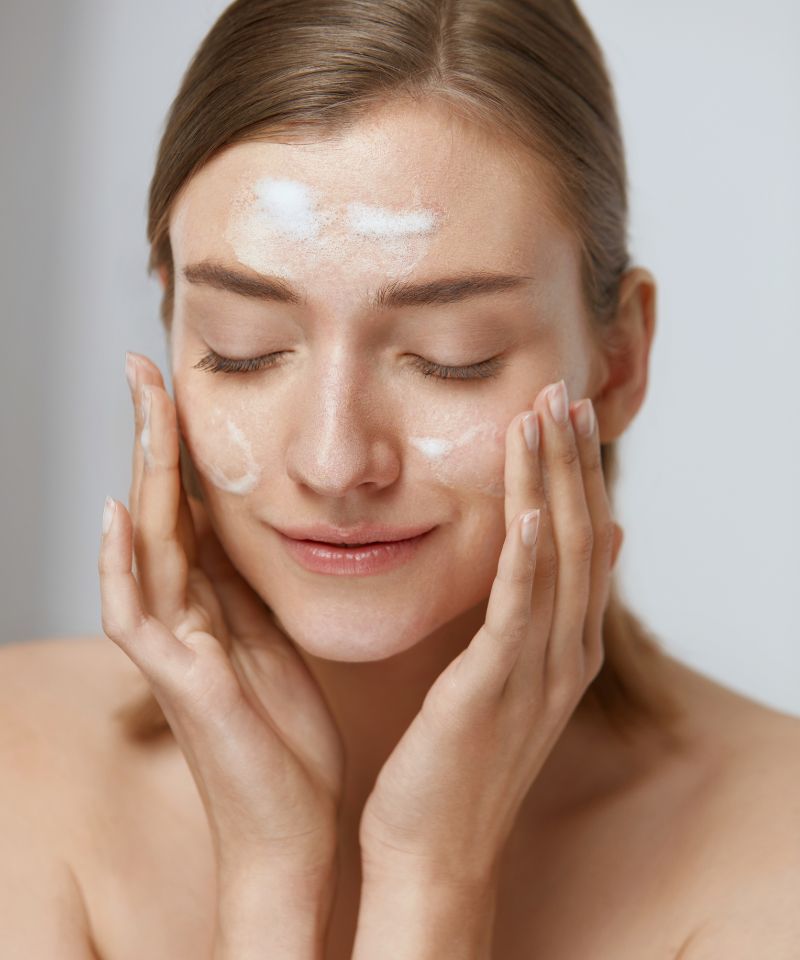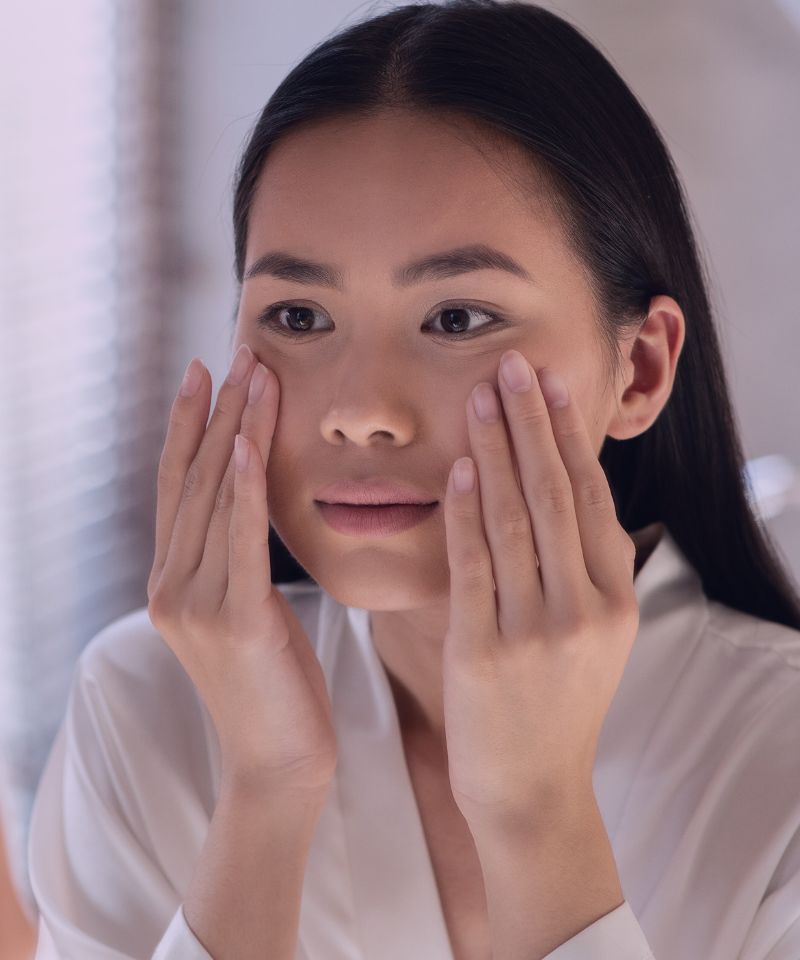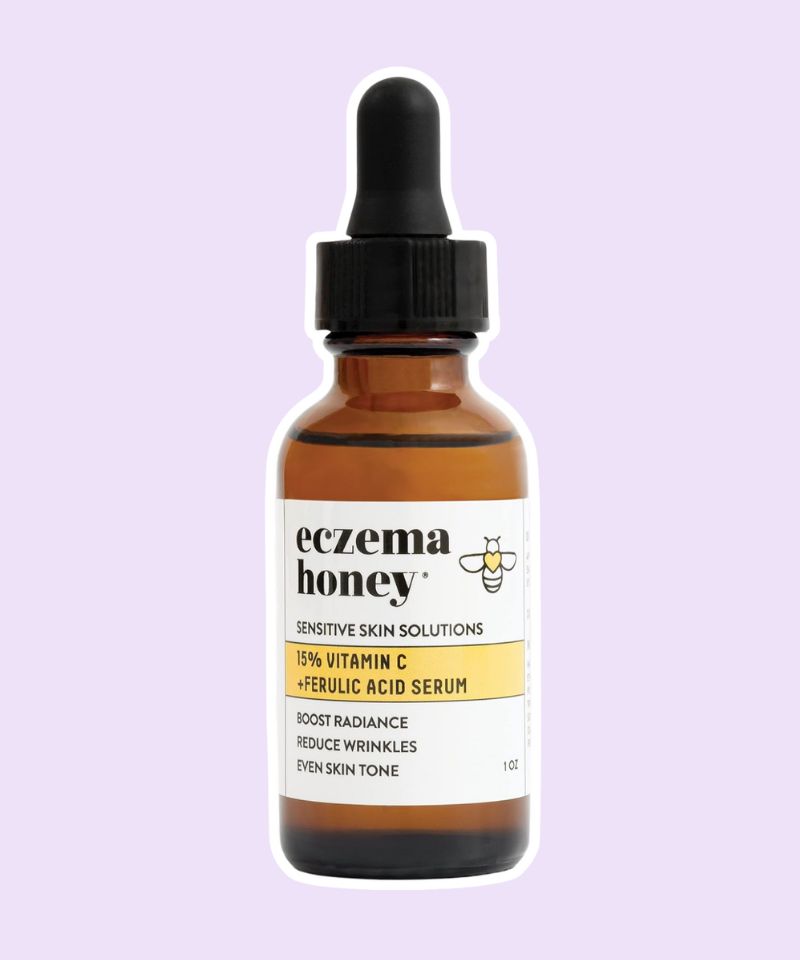Ferulic acid is a potent antioxidant that can improve many skin concerns, including hyperpigmentation, uneven skin tone, rough, bumpy texture, and even inflammation caused by free radicals.
I you are curious about the buzzy ingredient but still don’t know whether you need to incorporate it into your routine, in this article, I will delve into the benefits of ferulic acid and how it can enhance your skin health, as well as how to use it correctly for best results and no side effects.

What is Ferulic Acid?
Ferulic acid is a phytochemical with strong antioxidant properties found in the walls of plant cells.
Its natural sources include bran, rice, and whole grains, and it serves as a protective component for the plant against environmental stresses, much like how it can protect your skin.
When formulated in a skincare product and applied topically to the skin, ferulic acid is known to provide a wide range of benefits, making it a highly sought-after ingredient in the beauty industry.
However, its primary function is to neutralize free radicals and prevent oxidative stress.
These malfunctions, caused by environmental aggressors, can lead to cellular damage and symptoms such as premature aging, dullness, and inflammation.
Therefore, ferulic acid can be beneficial to your skincare routine if you want to ensure your skin has a line of defense against harmful external factors.
The Benefits of Ferulic Acid for the Skin

Antioxidant Protection
The standout feature of ferulic acid is its potent antioxidant capabilities.
Ferulic acid has been shown to increase the body’s production of its own antioxidant enzymes, providing a strong line of defense against oxidative stress.
Additionally, besides being a potent antioxidant, ferulic acid can help regenerate other antioxidants, like vitamins C and E, that have been depleted in the process of neutralizing free radicals.
This essentially recycles these antioxidants, allowing them to continue protecting the body from oxidative stress.
Therefore, by using ferulic acid, you are essentially tripling your skin’s protection against environmental factors, which, when allowed to thrive, can lead to visible complexion changes, including premature aging, dullness and sallowness, and uneven skin tone.
Sun Damage Protection
Studies have found that ferulic acid can significantly protect against the effects of UV rays, making it a valuable asset in preventing sun damage.
Additionally, ferulic acid has been found to have the ability to scavenge the free radicals generated by the sun, destroying them before they could damage the skin cells and the DNA.
In fact, topical application of ferulic acid actually reduced DNA mutations and damage—which would significantly decrease the risk of skin cancer.
With all that said, it should be noted that ferulic acid should not be seen as a replacement for sunscreen.
However, its inclusion in your routine can act as an additional barrier, especially when used in conjunction with a broad-spectrum SPF.
Anti-Aging Effect
Ferulic acid’s ability to combat free radicals means it plays a pivotal role in preventing the breakdown of collagen, the protein responsible for maintaining the skin’s firmness.
Free radicals are unstable molecules in the environment that play a role in the breakdown of cells, including the fibroblast cells, responsible for producing this firming protein.
Additionally, besides preventing the breakdown of healthy cells, ferulic acid stimulates the production of other antioxidants like vitamins E and C, which protect collagen degradation and boost new collagen production.
Therefore, by protecting and potentially boosting collagen, ferulic acid can help reverse signs of skin aging, such as wrinkles and fine lines.
Brightening and Evening Out The Skin Tone
Thanks to its antioxidant properties, ferulic acid neutralizes free radicals, which are also responsible for skin concerns such as dark spots and uneven patches.
This action can lead to a brighter and more even skin tone.
Additionally, ferulic acid also inhibits the enzyme tyrosinase, which is involved in the production of melanin, the pigment responsible for skin color.
However, when inflammation is present, this enzyme can trigger an overproduction of melanin, which protects the inflamed area with extra pigment, which is essentially what happens when you tan.
By stopping this action of uneven melanin production and distribution, ferulic acid can help fade hyperpigmentation and brighten the skin tone for a more even and uniform complexion.
This makes ferulic acid a fantastic addition to the skincare routine of anyone dealing with post-inflammatory hyperpigmentation left from acne, as well as uneven skin patches from hormonal conditions such as melasma and dark spots known as lentigines, which are the result of prolonged sun damage.
How to Use Ferulic Acid In Your Skincare Routine

Here are three tips on how to incorporate ferulic acid into your daily skincare routine for best results:
Choosing Products with Ferulic Acid
When shopping for skincare products with ferulic acid, look for serums or creams with a concentration of at least 0.5% and up to 3%.
It’s also important to check the formulation’s stability and efficacy.
Ideally, ferulic acid should be combined with other antioxidants and stored in dark or opaque packaging to prevent degradation from light and air exposure.
Finally, ferulic acid should be kept in a dark, dry place, away from direct sunlight, heat, and humidity (such as a steamy bathroom) to preserve its potency and effectiveness.
Using Ferulic Acid Correctly
Ferulic acid is best used during your morning skincare routine, after cleansing, and before applying moisturizer and sunscreen.
Applying it on damp skin can enhance its penetration and effectiveness but can increase the potential for irritation, especially if the skin is still adapting to the ingredient.
Therefore, as you start using ferulic acid, applying it to clean, dry skin is best.
A pea-sized amount of ferulic acid should suffice to cover your face, neck, and chest without wasting product or increasing the potential for irritation by using more than needed.
As with any new skincare product, patience is key.
Allow four to eight weeks of consistent use to start noticing improvements in your skin.
Depending on the severity of your skin concern, other products in your skincare routine, lifestyle factors, and the specific product used, results can vary.
Combining Ferulic Acid with Other Ingredients
Ferulic acid can be paired with other ingredients to complement its effectiveness and boost specific results.
For example, if you want to address hyperpigmentation, uneven skin tone, and pigmentary sun damage, you should combine ferulic acid with vitamin C.
Combine ferulic acid with vitamin E to reverse cellular damage, calm inflammation, and improve cellular function.
If you want to address hyperpigmentation while strengthening your skin’s barrier and reducing the appearance of redness and blotchiness, you should combine ferulic acid with niacinamide.
Furthermore, if you are looking to benefit from ferulic acid’s antioxidant effect but your skin is dry and dehydrated, combining this active ingredient with hyaluronic acid can help hydrate and plump your skin while protecting it from environmental stressors like pollution.
Finally, to address lines, wrinkles, and sagging skin, you should combine ferulic acid with retinoids to boost collagen production, cellular turnover, and elastin synthesis.
Ultimately, ferulic acid is a versatile ingredient with various benefits for the skin.
By incorporating it into your skincare routine, you can protect against sun damage, reverse signs of aging, and brighten your complexion.
Choose a stable and well-formulated product, use it consistently and patiently, and consider pairing it with other complementary ingredients for optimal results.
The Side Effects of Ferulic Acid

Ferulic acid is generally safe for topical use and well-tolerated by most skin types.
However, as with any skincare ingredient, some people may experience side effects.
These can include:
Irritation: Those with sensitive skin may experience irritation, redness, or itching when using ferulic acid. This can often be minimized by starting with a lower concentration and gradually increasing as the skin adapts.
Flaking: Mild flaking is not unusual when starting to use ferulic acid. This can be combated by incorporating a hyaluronic acid serum for extra hydration.
Increased Sun Sensitivity: While ferulic acid can help protect against sun damage, it can increase photosensitivity due to being a potent active ingredient. It’s important always to wear sunscreen when using ferulic acid.
Allergic Reactions: While ferulic acid itself is not a common allergen, it can be found in products with other ingredients that may cause allergic reactions. It’s always important to patch-test new products before incorporating them into your routine.
Incompatibility With Other Ingredients: Ferulic acid can potentially interact with other skincare ingredients, such as AHAs and BHA, and exacerbate irritation.
Experiencing an adverse reaction from ferulic acid is rare but shouldn’t be neglected.
If you experience any of the side effects mentioned above, it’s best to pause use for some time and see if your skin improves before deciding to either incorporate ferulic acid into your routine again with minor changes or discontinue it altogether.
The Best Ferulic Acid Serums

SkinCeuticals – C E Ferulic
Best ferulic acid serum for all skin types.
The SkinCeuticals C E Ferulic is a cult-favorite serum that combines 15% pure vitamin C, 1% vitamin E, and 0.5% ferulic acid for a potent antioxidant blend.
It has a lightweight, fast-absorbing texture that leaves a beautifully glowy layer behind and is suitable for all skin types, including sensitive and acne-prone skin.
The Ordinary – Resveratrol 3% + Ferulic Acid 3%
Best ferulic acid serum for hyperpigmentation and uneven skin tone.
The Ordinary’s Resveratrol 3% + Ferulic Acid 3% is a budget-friendly serum that pairs ferulic acid with resveratrol, another powerful antioxidant that can help protect and repair the skin while targeting uneven skin tone and hyperpigmentation.
However, although suitable for most skin types, the ferulic acid content in this serum is quite high, which can be slightly irritating to those with sensitive and reactive skin.
Belif – Aqua Bomb Hyalucid 11% Serum
Best ferulic acid serum for dry skin.
Belif’s Aqua Bomb Hyalucid 11% Serum is a lightweight, fast-absorbing serum that combines the hydrating powers of hyaluronic acid with the powerful antioxidant ferulic acid.
This hyaluronic acid serum also contains moisture-sealing ceramides, hydrating glycerin, and soothing aloe vera extract.
Perfect for all skin types, and particularly for those with dry and sensitive skin, this serum can provide antioxidant protection while also keeping the skin plump, hydrated, and calm.
Eczema Honey – 15% Vitamin C + Ferulic Acid Serum
Best ferulic acid serum for sensitive skin.
Eczema Honey’s 15% Vitamin C + Ferulic Acid Serum is specially formulated to cater to the most sensitive skin types, blending the anti-inflammatory benefits of honey with the brightening power of vitamin C and the free-radical fighting properties of ferulic acid.
This serum helps soothe irritated skin, reduce redness, and combat environmental stressors while promoting a more even skin tone.
Its gentle yet effective formula is a great option for those struggling with eczema or rosacea, looking for a serum that addresses aging and sensitivity simultaneously.
Pureclinica Triple Strength Vitamin C, E & Ferulic Acid Serum
Best ferulic acid serum for acne-prone skin.
Pureclinica’s Triple Strength Vitamin C, E & Ferulic Acid Serum is specifically tailored to meet the needs of acne-prone skin.
This power-packed serum boasts a formula that contains a blend of vitamins C and E and ferulic acid, along with hyaluronic acid to hydrate, salicylic acid to unclog pores, and retinol to increase cellular turnover and reduce active acne.
Moreover, its non-comedogenic formula ensures that the product provides adequate antioxidant protection without clogging pores.
Ideal for those seeking a serum that combats acne while also offering anti-aging and pigmentation-fading benefits, the Triple Strength Vitamin C, E & Ferulic Acid Serum is a versatile addition that will help tackle multiple skin concerns.

My name is Simone and I am a certified skin specialist. I created this website to teach my readers how to take great care of their skin and I also like to occasionally share my honest opinions on skincare products I’ve tried. You can learn more about me here.
